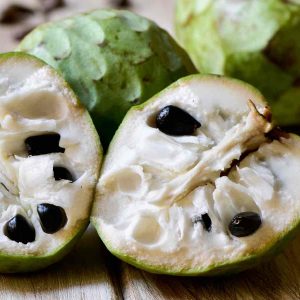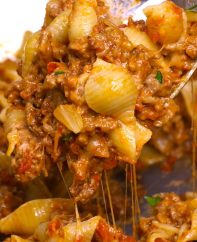Sugar Apple
This post may contain affiliate links. Please read the disclosure policy.
The Sugar Apple is a tropical fruit native to Latin America and the Caribbean. Also known as a sweet sop or custard apple, this delicacy is part of the Annona family and easily recognizable by its knobby exterior. The flesh is cream-colored with a custard-like consistency and a sweet and mild taste!
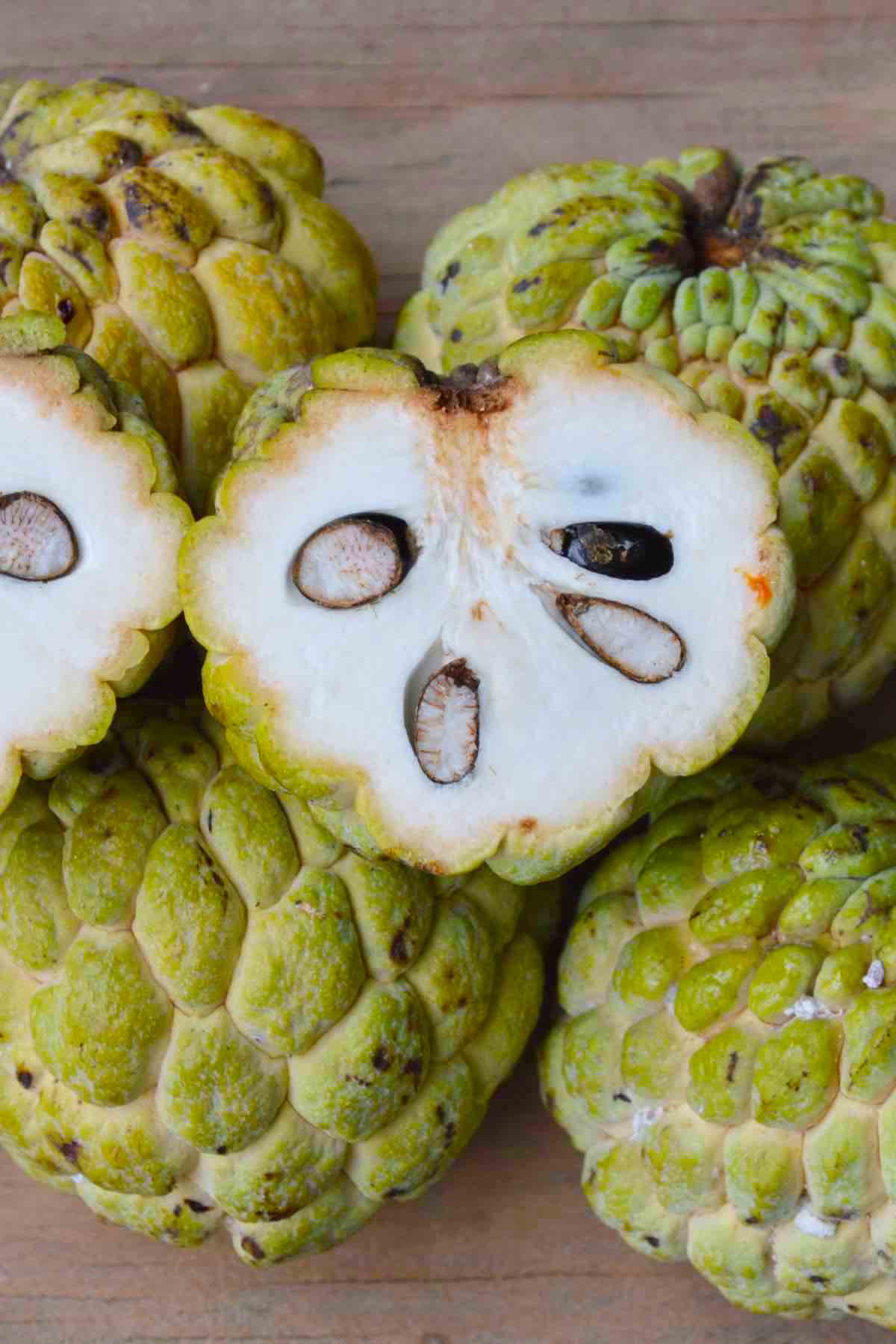
As the name suggests, sugar apples are very sweet and can be enjoyed by children and adults alike. Not only are they delicious, they are also a great source of many vitamins and minerals to support your healthy lifestyle. If you like smoothies, you’ll be happy to know that the sugar apple makes a tasty addition to your favorite blended treats.
What is a Sugar Apple?
Sugar apples, also known as sweet sop, custard apples and Atis fruit, are the most widely grown member of the anonna family of plants. Growing on the sugar apple tree or annona squamosal, it’s a close relative of the soursop and cherimoya, which has All of these fruits are popular in the Caribbean, South America and parts of Asia.
The sugar apple is usually green, grey or blue on the outside with knobby segments resembling scales. The flesh is creamy white or light yellow-colored with a similar consistency to custard (hence the name custard apple).
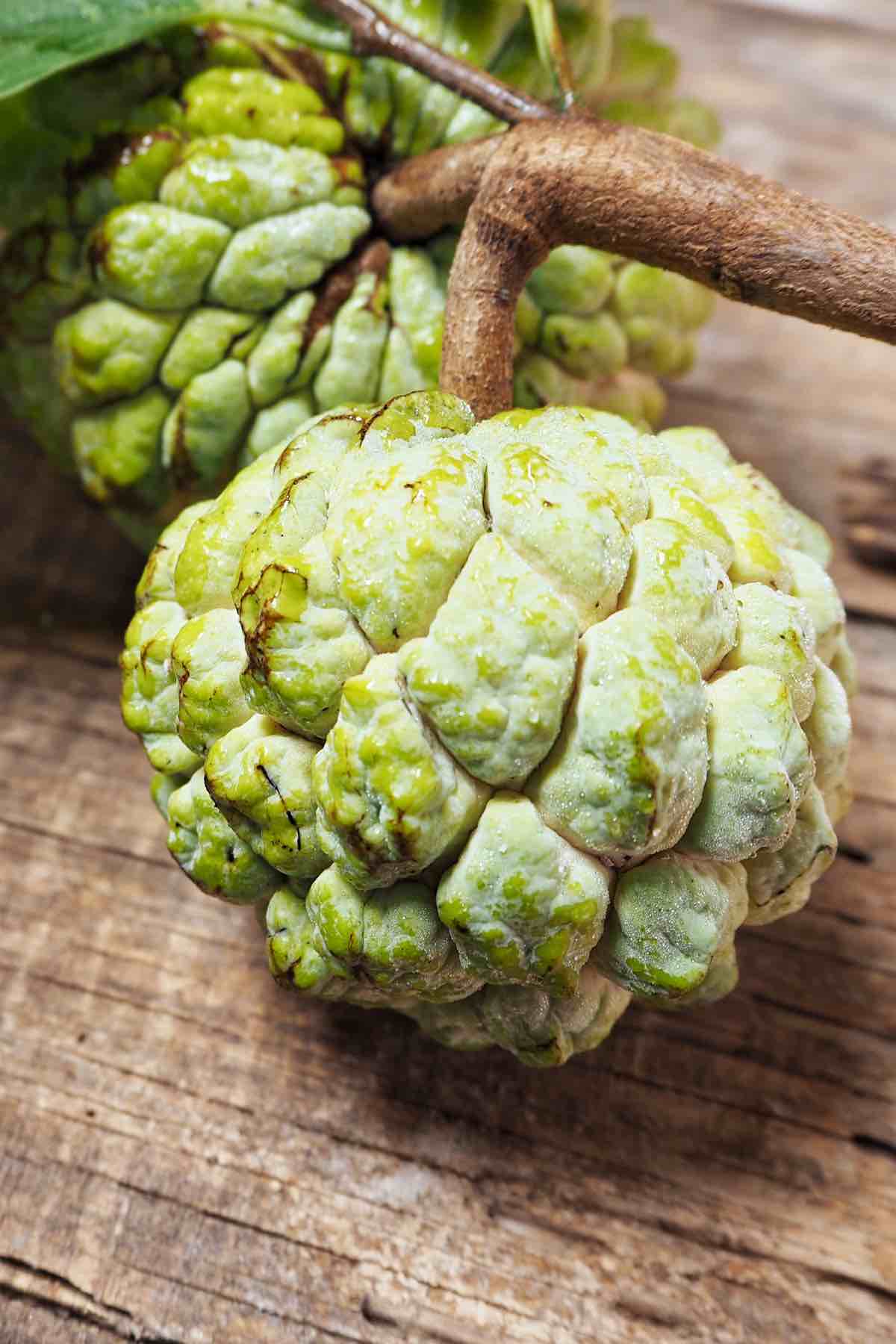
What Does a Sugar Apple Taste Like?
Sugar apples have a sweet, mild and creamy taste. The riper the fruit, the sweeter the taste of the flesh. The seeds of the fruit are covered with this creamy flesh, so you’ll have to spit out the seeds after removing the flesh.
What are Custard Apples Used For?
Custard apples are a refreshing snack on their own. However, you can also use them to add flavor to desserts, smoothies and can even to make non-dairy ice cream.
Is It Poisonous?
The flesh in sugar apples is perfectly safe. However, the seeds contain trace amounts of poisonous cyanide just like lychee and cherry pits. Therefore, you should take care to not swallow or bite into them. (They are as large as grapes and would be difficult to swallow, but seek prompt medical attention if you do.)

When is a Sugar Apple Ripe?
Sugar apples are ripe when the flesh is creamy and soft. To check ripeness, give it a gentle squeeze with your fingers. The outside should be springy without being mushy. If it’s quite firm, the fruit is likely unripe. Place in a brown paper bag or wrap in newspapers to accelerate the ripening process, but check regularly to ensure it doesn’t start spoiling.
Sugar Apple Benefits
This fruit’s popularity comes in part from its health benefits. According to Healthline, sweetsop can support immunity, digestion, eye health, heart heatlh while also reducing inflammation. Here’s how:
- High in antioxidants such as Vitamin C (promoting immunity), kaurenoic acid, folic acid, flavonoids and carotenoids. In particular, it contains the antioxidant lutein in support of eye health and vision. It also contains the flavonoids catechin, epicatechin, and epigallocatechin, which are believed to have cancer-fighting properties.
- High in Vitamin B6 in support of neurological health and mood, with one cup containing 24% of the reference daily intake.
- High in dietary fiber with one cup has 5 grams or 17% of the reference daily dietary fiber according to Nutritionix, in support of digestive health.
- Contains potassium and magnesium with one cup containing 10% and 6% respectively of the RDI to help regulate blood pressure.
Therefore, you can enjoy these health benefits along with the delicious taste of this fruit.
How to Eat a Sugar Apple
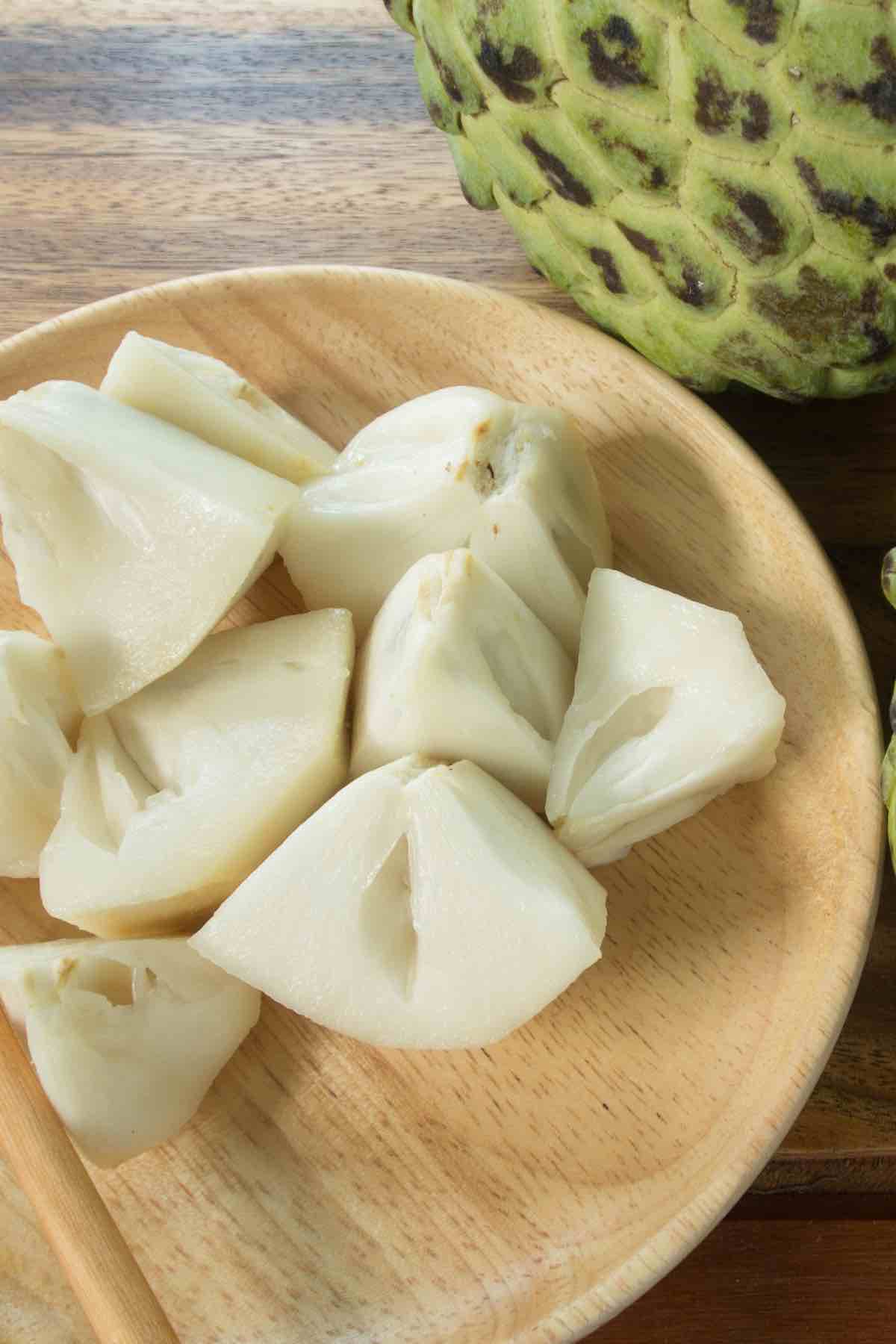
There are quite a few ways to enjoy sugar apples. Of course, they can be enjoyed on their own right off the tree. Just use your hands to pull the fruit open and enjoy the creamy flesh (being sure to spit out the seeds).
Sweet sop also make delicious smoothies, helping to create a creamy consistency with a sweet, tropical flavor.
If frozen desserts are your fancy, try freezing the flesh and using a blender to make it into a frozen treat with a similar consistency to ice cream. Or add other frozen fruits for a delicious vegan dessert.
Where to Buy Sugar Apple Fruit?
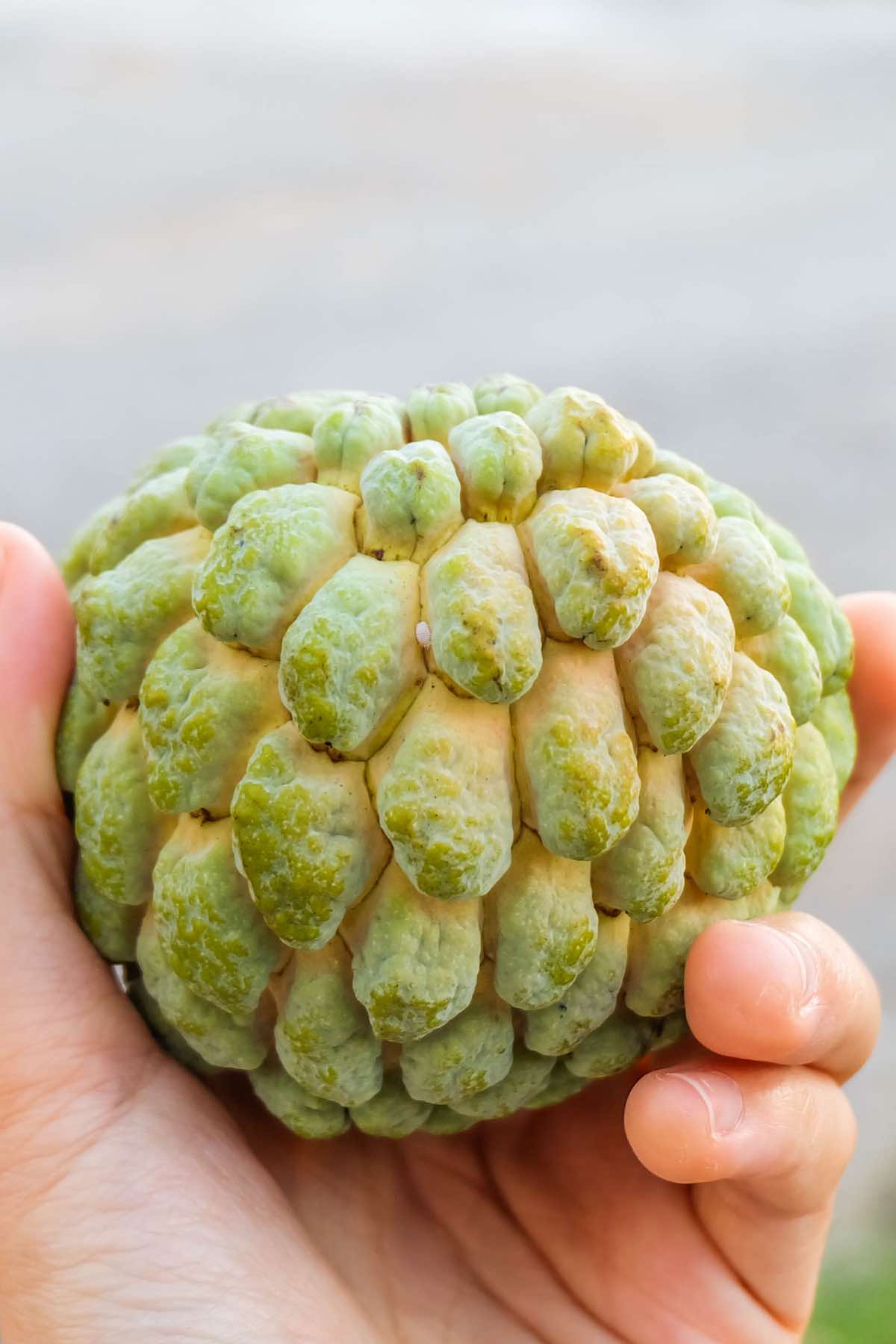
Sugar apples aren’t that common in the U.S., but you can usually find them if you look in the right places. Many Caribbean and Asian supermarkets stock them as will will some Whole Foods, Walmart and Trader Joe’s locations.
When all else fails, try ordering sugar apples online and have them delivered to your home.
Difference Between Sugar Apple, Cherimoya and Soursop
Sugar apples, Cherimoya and Soursop are all close relatives of the Anonna family of plants. They are somewhat similar in appearance and they all have creamy flesh and black seeds.
Cherimoya looks like a larger version of the sugar apple and the skin is smoother and less knobby. Soursops are the largest of the three fruits and have an oblong shape with spiky skin. The soursop is also comparatively tart or sour, hence its name!
More Tropical Fruits You May Also Like
Sugar Apple (How to Make a Sugar Apple Smoothie)
Ingredients
- 1 sugar apple
- 2 cups milk, or non-dairy milk (see note)
- 1 cup ice, ice cubes or crushed ice
- 1/4 teaspoon ground cinnamon, optional
Instructions
- Place the sugar apple on a cutting board. Rinse with water and pat dry. Then pull apart with your fingers or pry apart with a dull knife.
- Carefully scoop out the custard-like flesh with a spoon, separating the dark seeds and discarding them as you go (see note).
- To a blender, add the flesh along with the milk and ice.
- Blend for 5-10 seconds until smooth.
- Pour into serving glasses and garnish with a pinch of cinnamon if desired.
Equipment
Notes
- Make it Vegan: To make this smoothie vegan, use a non-dairy milk such as unsweetened almond milk, soy milk or oat milk.
- Seeds: The seeds have poisonous properties, just like cherry pits and lychee seeds. Take care to remove them all during preparation and discard.
Please read our nutrition disclaimer.
© TIPBUZZ. Images and text on this website are copyright protected. Please do not post or republish without permission. If you want to republish this recipe, please link back to this post. This post may contain affiliate links. Read the disclosure policy here.
